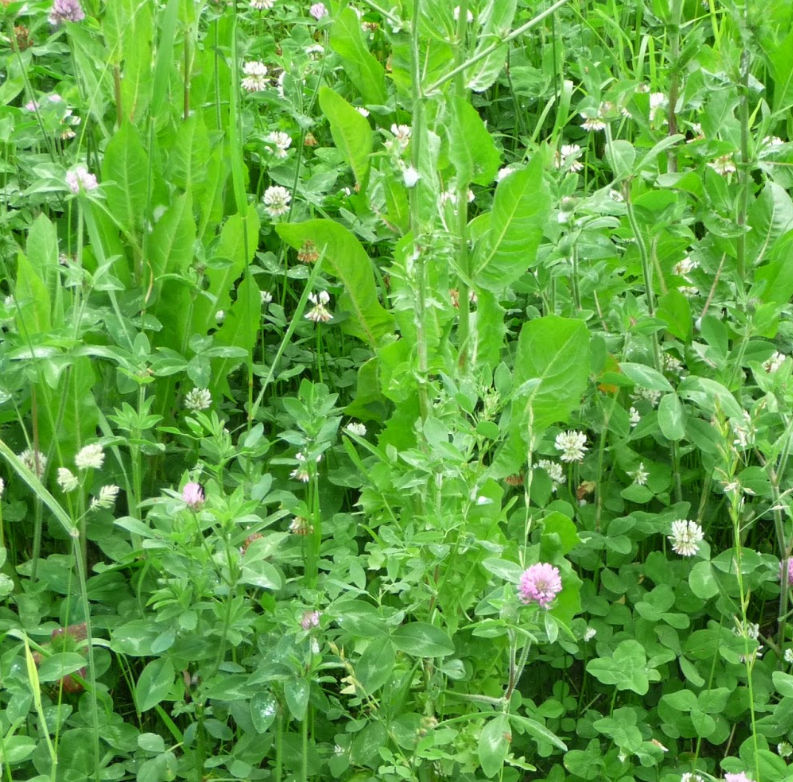
If you’ve been waiting for just the right time to plant perennials, we have good news. August and September are the perfect time to plant those tiny seeds. But before you head out to the field or pasture, here are some tips to ensure an excellent stand of new plants.
Planting
The first key to getting seeds established is the planting phase. Many times, the planting method is decided based on equipment you have on hand. We almost always recommend drilling seed to achieve the best seed to soil contact and control the seeding depth most accurately. Planting with a no-till drill works great as you don’t have to till and expose the soil to late August heat and sun which will quickly dry out soil moisture. Planting at ⅛”-¼” is recommended for most perennial plants. If planting with a no-till drill is out of the question, the good news is that perennial seeds are small enough, they usually do well in a broadcast situation. Again, the key is achieving the highest seed to soil contact. If you have growing foliage, plan to mow or graze it after you’ve broadcast the new seed. If you’re working with a tilled field, use a cultipacker to press the seeds firmly into the soil. Try to plan a broadcast seeding prior to a gentle, soaking rain that will aid in pushing the seed into the ground.
First year of management
In the first year of establishing perennials, it’s important to pay close attention and give them the best chance of survival. Perennials are perennial only because of their immense root system. While annuals put all their energy into developing a viable seed to continue the species, perennials rely on a vast root system that anchors them into the soil and provides access to water and other nutrients, forming symbiotic relationships with soil microbes. The above ground growth may seem unimpressive while the plant is putting all its available energy into developing this robust root system.
Access to sunlight is key to these early stages of development. Keep quick growing plants at bay by mowing frequently and avoid grazing until the plants have had adequate time to establish. Usually perennials can be grazed a year after planting, depending on rainfall. More rainfall would allow for earlier grazing, while less rainfall would push grazing off longer. Be patient with the new establishment and give it the best chance of survival right out of the gate.
Keep them thriving not just surviving
No matter how much work you put into establishing your perennials, if you don’t manage them for the long haul they won’t proliferate. Think about millions of bison roaming across North America, thriving on the nutrition from perennial grasses and forbs. The eastern side dominated by tall grass prairie, gradually replaced by shorter prairie plants in the west restricted by rainfall. Yet the whole continent supplied ample forage for millions of bison every year, the vast majority being perennials. Yet, driving through grazing or pasture lands today and one sees a much different story. But why? The short answer, rest. Grazing is a stressful event for a plant, much like running a marathon puts stress on the human body. While that sort of stress can be good and make one stronger over time, it must be followed by adequate rest and nutrition. Plants, too, need proper rest and nutrition after a grazing event to rebuild themselves and become stronger. The herds of bison were not stationary, rather they traveled and migrated being driven by predators and following food sources. By mimicking this natural rotation, livestock producers can prolong the life of perennials and spend less money long term. Many of our customers practice rotational grazing in one way or another, and in fact there are countless ways to make rotational grazing work on your operation. The underlying truth in all of those methods comes down to rest and managing that rest is crucial to getting the perennials right.
Perennials are a great option for many people looking for long term solutions for ground cover, grazing situations, and more. If you’re ready to place an order or just looking for some more direction, give us a call at 402-469-6784. We would love to help you find a perennial mix that works for you!
Want to talk with one of our expert sales representatives?
Fill out this form or give us a call today. 402-469-6784.
